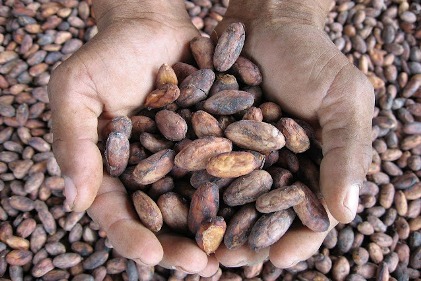
|
| Bernie Pacyniak |
Each year around this time, the Blommer Chocolate Co. puts on commodity and purchasing seminars throughout the country. Luckily, since they operate a facility in Chicago, I’m fortunate enough to be able to attend these updates on commodities and say hello to old friends while meeting new users of chocolate.
This year’s session, which was held again at Morton’s The Steakhouse (trust me friends, it was a wonderful lunch), had 125 attendees. Naturally, anytime you're talking about commodity forecasts, people are definitely interested.
Not that Blommer or any major chocolate supplier around the globe have a crystal ball telling them exactly what to expect from the future. They do have tools, though, ranging from field reports, pricing histories, statistical charts and analyses to experienced brokers, traders and commodity gurus.
Blommer’s team of Kip Walk, director of cocoa; Jeff Rasinski, director of commodities; Sheila Fortune, manager of commodities, and Ann Cromarty, procurement manager, put on quite a show sharing their technical expertise with the audience.
I have to admit, at times my “little gray cells” were too little and too gray to absorb some of the material, such as the various graphs and curves used to track price fluctuations over days, months and years.
One topic that I was particularly interested in, however, involved certified cocoa, and whether there will be enough of it around by 2020 — the date all the major global chocolate producers have said they will be selling only chocolate products made with certified cocoa beans by.
As Walk pointed out, today’s volume of certified cocoa accounts for only 5% of the total cocoa bean crop. To meet the needs of the likes of Mars, Hershey, Mondelez International (formerly Kraft/Cadbury), Nestlé, Ferrero and Unilever, certified cocoa will have to account for 55% of the total crop. If we use current crop numbers, that’s a two million metric ton gap, he said.
Blommer, like so many other cocoa and chocolate processing suppliers, have stepped up their commitment to help farmers meet that goal. In addition to forming a joint venture with Olam to manage sustainability programs in the Ivory Coast and Indonesia, the company is putting in place new programs that will kick in this year and the next in Nigeria, Ecuador, Peru and Ghana.
In total, the company looks to invest $45 million during the next eight years in cocoa sustainability efforts. Dubbed Sustainable Origins, the programs look to impact 100,000 farmers. As Walk had pointed out in earlier press meetings, by implementing proper farmer training, improving soil fertility and introducing stronger genetic material in the way of new trees, farmers can increase their yields by more than 30%. Improved yields benefit everyone, from farmers to processors, from children to consumers.
But will Blommer’s efforts, as well as all the efforts of all other stakeholders — which range from chocolate companies and cocoa and chocolate suppliers to brokers and government as well as non-government agencies — be enough to meet that two million metric ton deficit?

|
| Cocoa beans from the Amazon Basin in Ecuador. Photo provided by Blommer. |
As Walk himself said during a question-and-answer period during the seminar, it’s possible, but there are plenty of factors to consider. Let’s just say it will be especially challenging.
But does certified cocoa mean that much to consumers? It certainly resonates with consumers in Europe, but less so — much less — in the United States. Many consumer activist consumers associate certified cocoa as the best way to eradicate child labor.
It’s certainly a tool. But there are many independent small- and midsized-chocolate companies that maintain personal relationships with cocoa farmers and aren’t involved in any officially sanctioned certified cocoa programs.
Their main interests are in procuring fine flavor cocoa beans and helping farmers improve their livelihood. In reality, you can’t have one without the other.
In my way of thinking, the critical question isn’t whether we’ll have enough certified cocoa on hand in 2020? Rather, it’s whether we’ll have enough cocoa farmers earning a decent living to want to produce cocoa. Ensuring their well being and that of their families provides the right foundation for cocoa yield and quality improvements.

